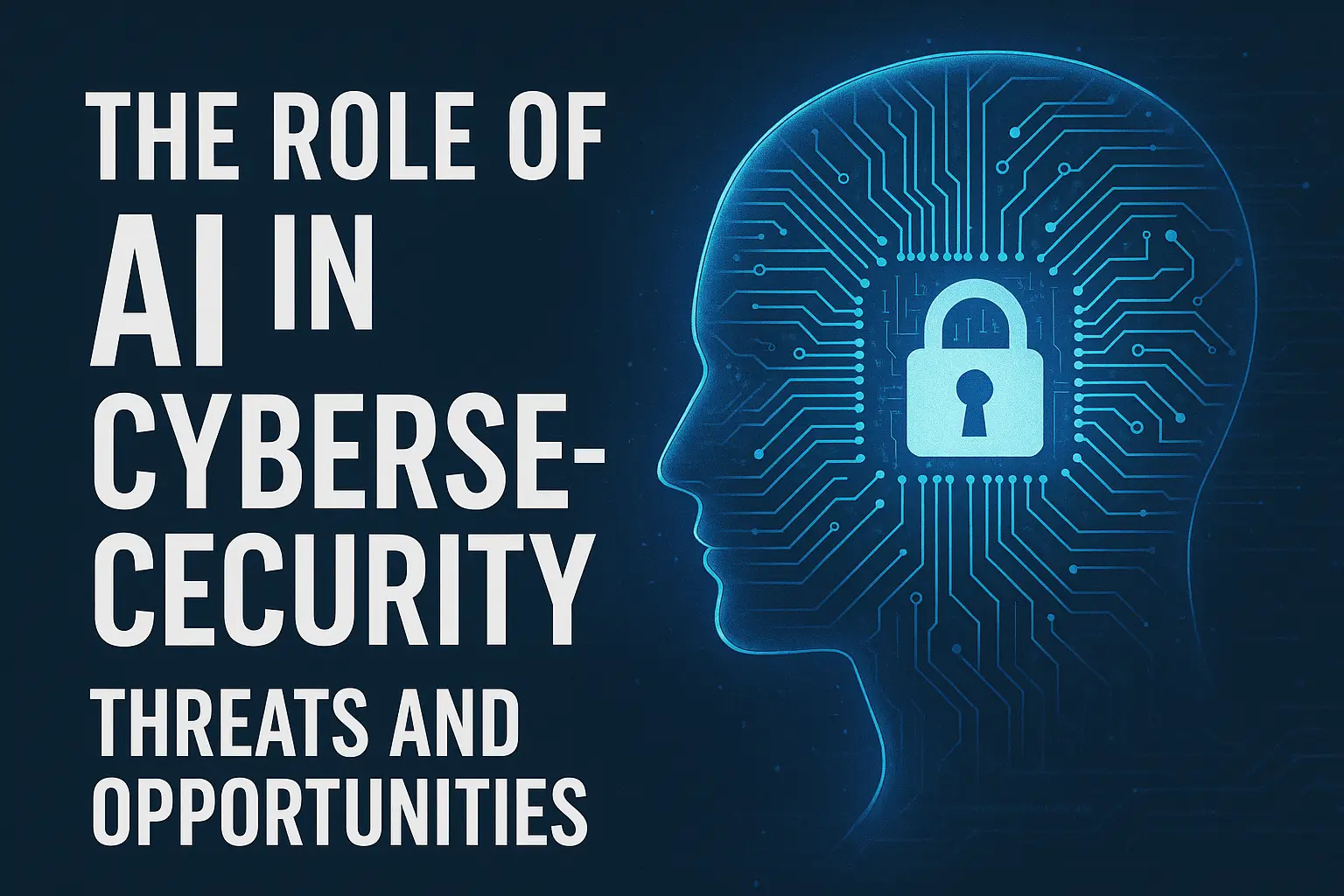As cyber threats grow more complex and frequent, Artificial Intelligence (AI) has become both a critical ally and a potential risk in the realm of cybersecurity. While AI offers powerful tools for detecting, preventing, and responding to cyberattacks, it also introduces new challenges and vulnerabilities that must be carefully managed.
This article explores how AI is shaping cybersecurity—both as a defense mechanism and a weapon—and what organizations can do to stay ahead.
How AI Is Used in Cybersecurity
AI’s strength lies in its ability to analyze massive amounts of data in real-time, identify patterns, and respond faster than any human could. In cybersecurity, this ability is applied in various ways:
1. Threat Detection
AI can detect threats by analyzing network traffic, user behavior, and system logs. Machine learning models are trained to recognize anomalies and flag suspicious activity.
Example: Detecting unusual login attempts or malware signatures that deviate from normal behavior.
2. Intrusion Prevention Systems (IPS)
AI-enhanced IPS can proactively block attacks before they reach their target by identifying potential vulnerabilities and applying fixes or alerts in real-time.
Benefit: Reduces reliance on reactive security approaches.
3. Phishing Detection
AI tools scan emails, websites, and social engineering patterns to identify and block phishing attempts. They analyze tone, language patterns, URLs, and sender metadata.
Example: Gmail uses AI to block over 100 million phishing emails daily.
4. Malware Analysis
AI can deconstruct files to detect malicious behavior without needing a signature or human analysis, allowing for rapid zero-day malware detection.
Example: AI sandboxing tools simulate file execution to monitor behavior.
5. User Behavior Analytics (UBA)
By establishing a baseline of normal behavior for users, AI can detect insider threats or compromised accounts based on deviations.
Use Case: Detecting an employee accessing sensitive files at unusual hours.
6. Security Automation and Incident Response
AI can automate responses to common threats, such as isolating infected devices or shutting down unauthorized access points.
Benefit: Speeds up response times and reduces the burden on security teams.
The Opportunities AI Brings to Cybersecurity
- Real-Time Protection: AI works around the clock to monitor and respond to threats.
- Scalability: Ideal for large enterprises handling huge volumes of data and endpoints.
- Predictive Capabilities: AI anticipates future attacks based on historical patterns and behavior.
- Reduced False Positives: AI refines alert accuracy, saving time and preventing alert fatigue.
- Improved Risk Assessment: AI evaluates system vulnerabilities and recommends corrective actions.
The Dark Side: How Cybercriminals Use AI
Just as defenders use AI, so do attackers. This has given rise to more advanced, stealthy, and adaptive threats.
1. AI-Powered Phishing
Cybercriminals use AI to craft personalized phishing messages that mimic trusted contacts or services with alarming accuracy.
2. Malware Evasion
AI enables malware to adapt in real-time, avoiding detection by traditional antivirus or security filters.
3. Deepfakes and Voice Spoofing
AI-generated videos or voices can impersonate CEOs or executives to commit fraud or manipulate decisions.
Example: A company transferred $243,000 after being tricked by an AI-generated voice impersonating the CEO.
4. Automated Hacking
AI-driven bots can rapidly scan for vulnerabilities, launch attacks, and adjust tactics without human input.
5. Data Poisoning
Attackers can intentionally feed bad data into training models, corrupting AI systems and skewing their decision-making.
Challenges of Using AI in Cybersecurity
1. Data Dependency
AI needs large, high-quality datasets to learn effectively. Incomplete or biased data can lead to poor performance or misclassification.
2. High Costs
Implementing and maintaining AI systems requires investment in infrastructure, skilled personnel, and ongoing training.
3. Black Box Problem
Some AI models lack transparency, making it difficult to understand how they arrive at decisions—problematic in regulated industries.
4. False Sense of Security
Over-relying on AI can lead organizations to ignore traditional cybersecurity practices or fail to train human teams.
Best Practices for Secure AI Integration
- Combine AI with Human Expertise: AI should augment, not replace, security professionals.
- Regular Model Audits: Continuously evaluate AI decisions and retrain models with updated data.
- Data Privacy Compliance: Ensure AI tools align with data protection regulations (e.g., GDPR, HIPAA).
- Monitor AI Behavior: Detect model drift or anomalies that could compromise accuracy.
- Develop Response Plans: Prepare for both AI-assisted attacks and potential AI system failures.
The Future of AI in Cybersecurity
- Self-Healing Systems: AI that not only detects attacks but automatically patches vulnerabilities.
- Federated Learning: AI systems trained across decentralized data sources without compromising privacy.
- Explainable AI (XAI): Efforts to make AI decisions transparent and understandable to humans.
- AI vs. AI: Defensive AIs trained specifically to outsmart offensive AIs used by hackers.
Final Thoughts: Double-Edged Intelligence
AI is both a weapon and a shield in cybersecurity. When used responsibly, it strengthens defenses, enhances response times, and reduces risks. But if left unchecked—or misused—it can become a powerful tool in the hands of cybercriminals.
The key to success lies in staying informed, maintaining a balance between automation and human insight, and continuously evolving alongside the technologies we adopt.
